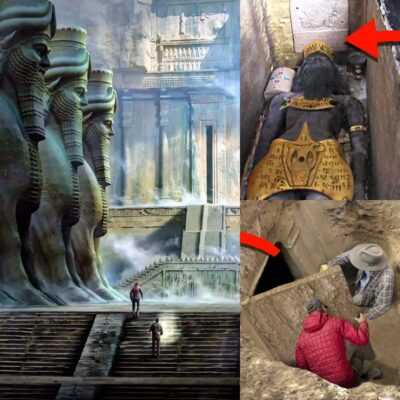Lithoredo abatanica is the name of a species of wood borer and is found only in the Abatan River of the Philippines, a country in Asia. But unlike all woodcutter brothers who need a piece of wood, they only eat one stone for the rest of their lives.

Sand workers of the Abatan line
In the Philippines, the Abatan River flows east of the city of Bohol, cutting through the towns of Catigbian, Antequera, Balilihan and Maribojoc. Before there was a road, this river served as the main traffic route of the region.

The Abatan River, home to the rock borer Lithoredo abatanica
Thanks to the accretion of water and alluvium, the Abatan banks are densely packed with plants, with at least 273 species. Wild animals flocked, a total of 67 species, including the rare firefly Pteroptyx macdermotti.
Interestingly, in 2006 on this river, people suddenly discovered a rather large wood chisel, about 15cm long, with blunt teeth. They do not diligently chisel wood but gnaw rocks, then “go heavy” into the sand.
Thinking that only species that eat coral in the sea (eg parrot fish) are nature’s sand-creating workers, even in freshwater environments there is a crazy “work” day and night to shave ice.

Lithoredo abatanica. Lithoredo abatanica
The mutation of the wood chipper
Originally, wood chisels (Teredinidae) were a nuisance to seafarers. With the ability to digest wood, they destroy from the hull to the keel of the boat, the wharf.
Basically, the wood borer is a mollusk. Please do not confuse them with the arthropod cirripedia, which cling to shallow sea cliffs, not moving a millimeter all their life.

Common wood chisels
Outwardly, the wood chisel resembles a worm, which can be from 2-60cm long depending on the species, but they all share the same characteristic that they love to eat wood. During each spawning, the female lays between 500,000 and 1 million eggs. Their eggs are floating in the sea, just need to meet the wood to immediately cling, hatch into children and go crazy. Therefore, in addition to the name wood borers, they are also known as “termites of the ocean”.
Only since iron was discovered and sea-going ships were reinforced with strong metal shells did fishermen escape the misery known as “boat borers”. No one bothered to bother with them anymore, until 2006, when Lithoredo abatanica was accidentally discovered. Instead of eating wood like its cousins, this animal eats rocks.
A lifetime of hard work chiseling rocks in the riverbed
You certainly know some animals (eg birds, chickens, platypuses…) that pick up a bit of sand and gravel to eat. However, they do not eat things that are both hard and tasteless because of hunger or lack of nutrients, but because they need “tools” to support the operation to grind food in the gizzard.
However, with Lithoredo abatanica, ice is the “main dish”.


The stone is chiseled, and the stone has a hole in it
With large, flat teeth, they persistently shave ice for food. While their wood-eating brethren have a bag-like organ for storing and slowly digesting the wood, the Lithoredo abatanica has a straight-forward handling system. The entire amount of ice chips that are put in through the mouth will always go down the anus and be released.
Lithoredo abatanica can chisel even stone slabs. They “dig” deeper and deeper into the rocks at the bottom of the Abatan River, until they penetrate and then start to punch new holes.
I don’t understand where the nutrients come from, but all of them are fat
No matter how actively Lithoredo abatanica eats rocks, there’s no denying the fact that rocks are clearly devoid of nutrients. So they shouldn’t be able to live just by eating rocks. But with the exception of ice, the researchers did not see them eat any “side dishes”.

Another strange thing is that even if they only eat ice, they are still very fat. In the world of wood borers, it is found that these “ocean termites” are symbiotic with a number of wood-degrading bacteria. As for Lithoredo abatanica, they are only one body.
“We will try to observe and learn more closely to understand how they absorb, turn rocks into nutrients,” promises Reuben Shipway, researcher Lithoredo abatanica.
After all, the only thing Shipway can be sure of is that punching holes deep into the rock also helps Lithoredo abatanica protect itself. The holes left by it also immediately become “homes” for shrimp and crabs.











